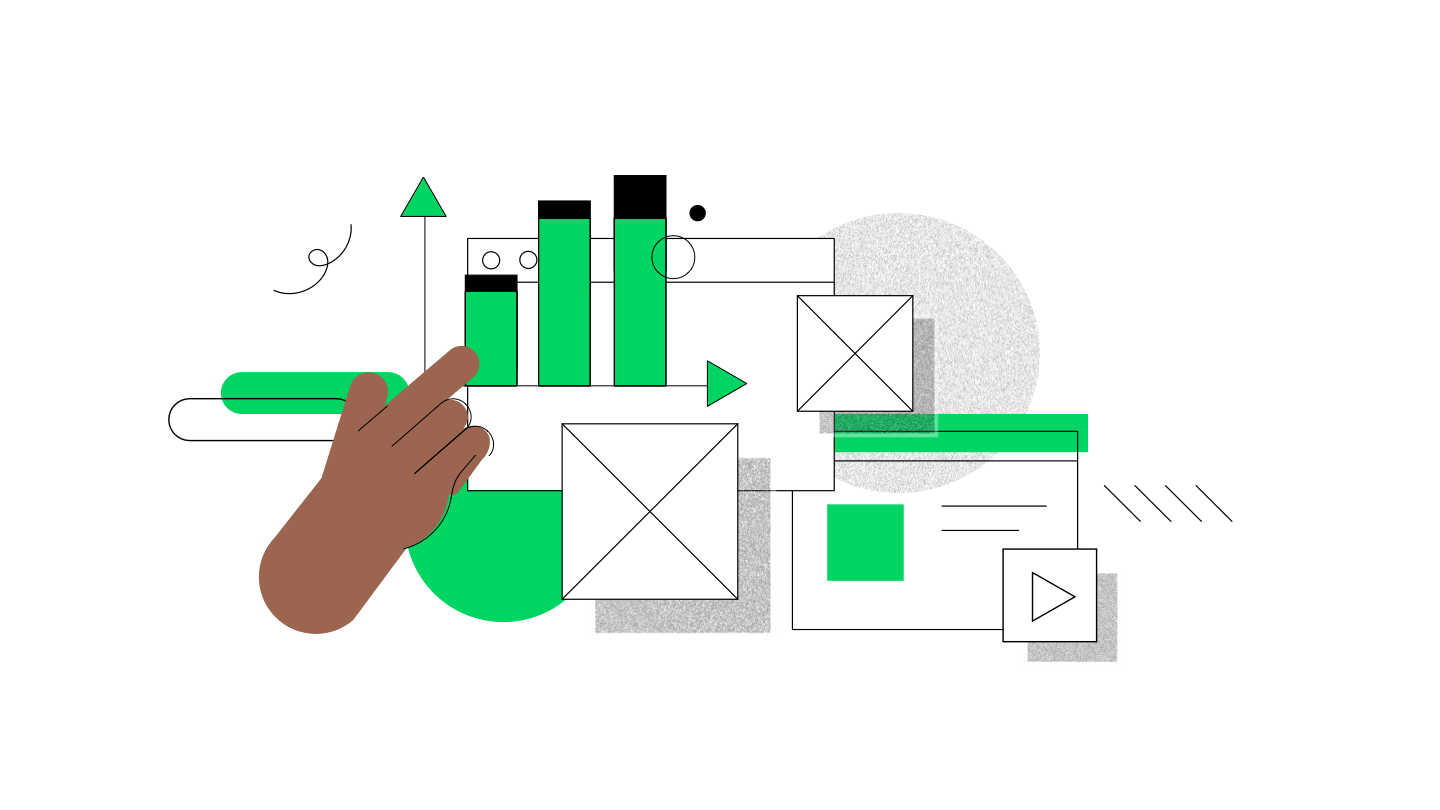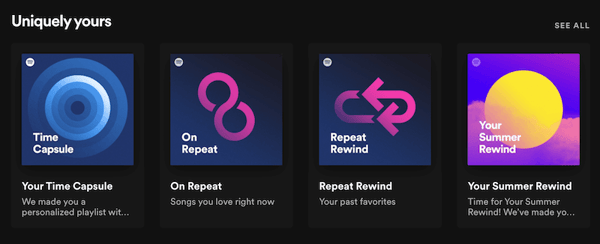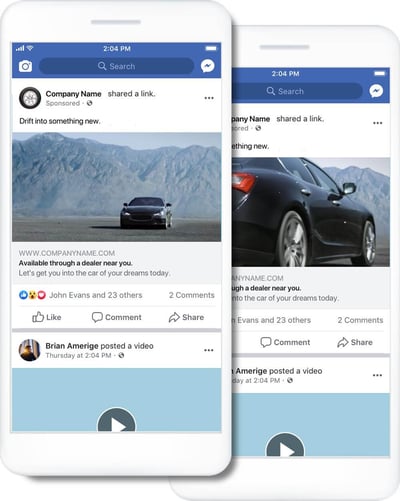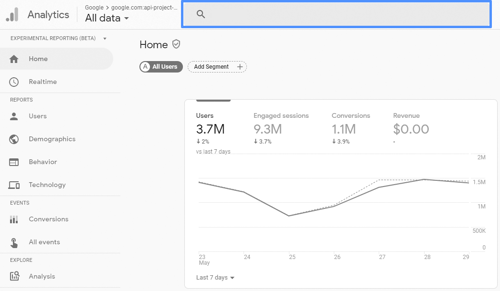12 Examples of Data Science in Marketing

Data has never been more accessible or essential to running a business. An increasing number of sophisticated sources, from social networks to web databases, provide big data on an unprecedented scale.
Data scientists, who process and translate data, have emerged, enabling business owners to use this new, valuable intelligence to inform their marketing strategies.
Understanding the value that data science can add to your business is now incredibly important. For that reason, we have for you 10 examples of using data science in marketing that will help you to understand its potential.

From this article, you will learn:
- What is data science?
- Uses of data science in marketing
- Real-life examples of data science in marketing
- Benefits of using data science in marketing
What is data science?
Data science is an interdisciplinary study of large volumes of data using modern tools. It aims to provide a holistic, thorough, and refined look into raw data. It enables your business to focus straight in on those insights that will directly influence how your business works, help you make practical predictions for the future, and enable you to make effective marketing decisions.
New trends in the field of data science reflect the growing possibilities for businesses, be it in the realms of customer service, product development, or customer value.
How is data science used in marketing?
Find out how can Data Science be used in marketing and read on the examples of its application below.
1. Channel optimization
Over the years, the key insights that businesses collect about their customers have been primarily their age, location, and gender. These details give businesses and their marketers very little idea of who their client is and what their client wants.

Data science, in the form of tools such as affinity (or market basket) analysis, can paint a much more accurate picture of the kind of person the business is looking to appeal to and where best to market to them.
Connections can be made, through a detailed analysis of the customer’s social media interaction, that will form a particular story or pathway. This pathway will highlight any missed opportunities on YouTube, Instagram, Pinterest, or any other channel that is popular with your ideal client, where advertising and content would be most effective.
2. Customer segmentation
Recognizing the different needs of your customers is essential to a productive marketing plan. No two customers are exactly the same, but their pain points, desires, and aspirations can be grouped in helpful ways to inform marketing strategies and drive conversions.
Customers can be segmented based on attributes such as their location, their historic purchase patterns, and how they have navigated through your website. Data scientists can use specific machine learning algorithms to determine both the potential value of each ideal customer group and which products are most likely to appeal to them. This can then inform your content strategy, your channel optimization, and your advanced lead targeting.
3. Lead targeting and advanced lead scoring
Reaching out to the right potential customers at the exact right time is widely recognized to be the most challenging part of the digital marketing process. Data science and machine learning systems can make customer analytics a lot easier.
Through extensive statistical analysis of your collected marketing data alongside insights from data libraries, data scientists can predict which offers or products will be most attractive to different customers and demographics at different times.
The potential value of each lead and each potential customer can be scored, depending on factors such as the behaviors of similar customers in the past, their word choice when interacting with you, and the characteristics of the customer segment they fall into.
The process will save you from wasting part of your marketing budget on guesswork and trial and error.
The effectiveness of each predictive algorithm will then go on to inform future marketing decisions, including any new products or services you choose to create. Implementing lead targeting with a machine learning model will turn this process into a streamlined end-to-end solution that is constantly refining and improving itself.
4. Real-time interaction and analytics
There are benefits to using data collected over time to inform your marketing decisions, but the delay in gathering this data can put businesses on the back foot.
Real-time analytics enable businesses to measure and process customer behavior as it happens, providing meaningful, actionable insights at what could be a critical time for customer conversion. Real-time analytics also allow for a faster response time when your focus market fluctuates, saving you money and wasted marketing in the long run.
Two key ways in which real-time analytics can be used in marketing are:
- sending out targeted offers and incentives to appropriate customers when they are in-store or on your website;
- and, using customer behavior to understand when and why sales are lost or made.
5. Content strategy
Devising an effective content marketing strategy to pull in new leads can sometimes feel like a shot in the dark.
Without data and analytics to support your findings it can feel almost impossible to pinpoint what it is exactly that your customers are enjoying, even if you receive a high response and conversion rate from your content.
This is where data science steps in. Though testing is still necessary to truly understand the quality of your content, some data science methods, such as serial testing allow you to do so in the most effective, least time-exhaustive way, using an unsupervised machine learning algorithm.
Serial testing can help you drill down on details as small as word choice and color. Techniques such as time-series forecasting can then help you predict when these creative choices will be most effective across all platforms, allowing you to put fully optimized content in front of exactly the right people at exactly the right time.
6. Sentiment analysis
Creating a positive reputation for your business or brand is vital.
Your customer’s initial reaction when they find your social media channels or website can go a long way to shaping how positively they view you, even before they have experienced your service. This reaction is often shaped by reviews or responses left by others.
A key way to ensure you have control over your reputation is to tap into the emotions of your clients through sentiment analysis. Though this can be done manually, machine learning algorithms greatly increase the speed and effectiveness of this data analysis.
Specific values (negative, neutral, or positive) can be assigned to individual words, to give each social media post a score based on the reactions in the comments section. This same theory can be applied to email correspondence, Google reviews, and even to phone conversations using speech-to-text analytics.
This can help you single out the products, services, or social media marketing efforts that elicit the desired reactions from your pool of potential customers, and to determine where any breakdowns in customer service are occurring.
7. Maintaining customer loyalty
Maintaining customer loyalty and building a better lifetime value for your average customer is potentially a more profitable application of your marketing budget than solely acquiring brand-new customers.
Data science and machine learning models can help businesses identify three things that may help improve customer loyalty:
- the next best action or the next best offer for each customer as they interact with your website or product;
- how a customer might react in a specific circumstance;
- and what the problem is if a client doesn’t return.
Once these three things have been uncovered, you can solve many problems that may be making customers reluctant to return, set up automatic recommendations for clients who have already worked with you, and predict the best set of actions should a specific interaction be realized.
Thanks to the availability of their customer data, marketing to a client who has already enjoyed their experience with you is easier and cheaper than marketing to a lead that is ‘cold.’
8. Predictive analytics
Predictive analytics bring together various machine learning algorithms and models (and sometimes artificial intelligence in general) to predict what might happen in certain situations that affect either your business or your customer.
With more Internet of Things (IoT) devices than ever, there has never been so much data on which to base these predictions, and so, by extension, the predictions that are possible with the right system in place have never been more accurate.
Predictive analytics can help businesses do the following:
- Target customers with a higher potential lifetime value and/or lower churn rate
- Successfully distribute content to the right audiences
- Determine the effectiveness of digital advertising campaigns before their release
- Effectively cross- or up-sell products.
9. Recommendation engines
Recommendation engines work off the back of a successful predictive analytics system.
There are two types of recommendation engine:
- collaborative filtering
- and content-based filtering.
A recommendation engine based on collaborative filtering will suggest products to customers based on the purchase habits of other customers, irrespective of the product type. A recommendation engine based on content-based filtering is more aware of product type and description and recommends products that are similar to one another.
Both types of recommendation engine have their downsides. Collaborative will potentially recommend products that do not suit the exact needs of the customer at that time, and content-based filters will recommend very similar products rather than up-selling.
Most businesses, therefore, use a mix of the two, recommending products based on type, description, and past popularity with similar customers.
10. Marketing budget optimization
The overall aim of data science is to ensure that every penny of your business’s marketing budget is spent in a useful way that maximizes profits.
By optimizing who you market specific products to, and when, your business can avoid spending money on marketing strategies that are not driving results.
All of the examples above can help achieve this, allowing you to put together a sharp, comprehensive, and often automated marketing plan that covers everything from identifying your customer base to determining how the weather might affect the sale of one specific product.
11. Regression analysis
Unlocking the hidden patterns in data is like embarking on a thrilling detective journey, and regression analysis serves as our trusted magnifying glass. Picture a graph that unveils the intricate relationship between two or more variables, revealing their interplay in the marketing realm.
This statistical powerhouse enables us to dissect the impact of independent variables on a dependent variable, bringing us closer to understanding what truly matters in driving change. With each calculation, regression analysis becomes our accomplice, illuminating the factors that hold the key to customer behavior.
Armed with these insights, you can craft targeted strategies that captivate audiences, making data-driven marketing decisions that leave a lasting impact.
12. Price recommendations for retail
In the dynamic realm of retail, data science emerges as a formidable ally. It empowers businesses to navigate the ever-changing currents of pricing strategies with precision and confidence. By unleashing the potential of advanced machine learning algorithms and sentiment analysis, retailers can unlock invaluable insights into customer reactions and preferences.
This data-driven approach enables them to set optimal price recommendations that resonate with their target audience, driving higher revenues and bolstering customer satisfaction. In this era of digital transformation, where competition is fierce, harnessing the power of data science is the strategic imperative that propels businesses toward sustainable growth and success in the retail market.
What are the real-life examples of data science in marketing?
Here are the examples of companies using data science in marketing.
Airbnb
Airbnb is the perfect example of how data science can be applied to marketing to astonishing effect. It’s important to note that the key to their resounding success is that they hired a data scientist from the very beginning, when there were only seven people on the team.
As the business has grown, their approach to data science has become multi-faceted, with scientists interpreting data for every aspect of the company.

Source: Airbnb
Data science has been a priority since the founder first recognized its potential to rapidly aid company growth, meaning that problems and opportunities alike at every level have always been properly explored.
In-house development programs, such as Airflow and Airpal, have put the power of data at every employee’s fingertips and even allowed hosts and customers to learn from one another.
Netflix
One of the main priorities of a content subscription service such as Netflix is keeping its viewers coming back for more.
Netflix’s recommendation engine serves exactly this purpose and recommends new films and series based on the viewing history of users with similar interests. Though the first-hand effect for the user is enriching, helpful, and personal, the ultimate goal is to keep the user subscribed month after month.

Spotify
Similar to Netflix, Spotify aims to sustain its subscribers by providing new, interesting ways for them to discover music. The big difference between these two platforms is the sheer amount of content Spotify offers in comparison to Netflix - a necessary difference given the two content types.
As a result, searching for new music that you will enjoy on Spotify manually is considerably harder than finding a new film or series on Netflix.

One initiative that aims to solve this problem is the Discover Weekly playlist. Every Monday, a playlist will be tailor-made for each user, based on the listening habits of similar users.
Equally, the Release Radar lets users stay up-to-date with new releases from the artists that Spotify knows they enjoy, and the Daily Mix blends songs the user already listens to with new music that will encourage them to explore further. All of these ideas keep each user’s account fresh, up-to-date, and interesting, without any action required from them.
Find out more about how Spotify makes its recommendations here.
Data science at Facebook takes a multi-layered form. Not only do they have their own insights to manage and action, but they also provide marketing tools and insights to the thousands of business owners who market through their platform. The need for effective strategies that work for their customers is vital.

Source: Facebook for Business
The team at Facebook has set up machine learning models that accurately measure the effectiveness of their customers’ marketing campaigns, distribute the campaigns effectively, and allow Facebook’s own marketing team to develop tools and insights to better serve the business owners.
Like Facebook, Google aims to give its business-owning clients a great return on their investment. Most small businesses using Google for their marketing analytics needs will not have an in-house data scientist, so will rely on Google to provide those services behind the scenes. The aim is to make the data and analytics as simple and easy to read as possible.

Source: Google Support
Google provides business owners with only the most valuable tools to create the bones of their marketing campaigns and measure the results, while its own marketing team works on delivering their advertisements to customers that are most likely to purchase.
Benefits of using Data Science in marketing
In the rapidly digitized world, excluding data science from your marketing plan could be a costly decision to make. The benefits of data science will quickly outweigh any initial hiring or set-up costs.
These benefits include:
- Waste less time and money on trial-and-error marketing plans
- Target only the most valuable customers
- Increase a customer’s lifetime value
- Quickly learn from customer feedback
- Predict which products and services will be popular in the future
- Refine your digital advertising
- Turn more leads into conversions with cross- and up-selling
If you need support implementing any of the above examples within your business, or help to understand what data science can do for you, don’t hesitate to speak to us.








